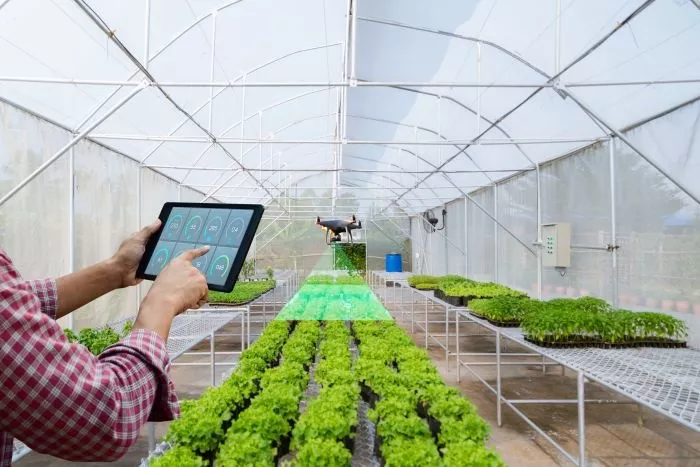Machine vision technologies are playing an increasingly pivotal role in industrial automation across various sectors, including logistics, manufacturing, agriculture, and automotive. Whether used for tasks like inspection, product assembly, traceability, or automated checkout, machine vision systems are becoming more common and essential in today’s operations.
Steve Kinney, director of training, compliance, and technical solutions at Smart Vision Lights, explains that machine vision has evolved significantly. “We’ve seen it move from small inline modules on production lines to larger spaces used for tasks like bin picking, palletizing, and other expansive operations,” Kinney said. “The COVID-19 pandemic accelerated the adoption of machine vision, especially in automated warehouses, where it became part of larger, interconnected systems.”
This shift is not only happening in warehouses but also in agriculture, where machine vision technology, combined with autonomous vehicles, is creating new opportunities. Kinney suggests that this innovation could lead to the growth of a ‘smart farming’ market, making machine vision more commonplace in real-world applications.
The machine vision market is growing rapidly. According to a projection by Interact Analysis, the industry will see a compound annual growth rate (CAGR) of 6.4% through 2028, with revenue expected to reach $9.3 billion. This growth is being driven by ongoing advancements in both hardware and software, as companies work to improve the accuracy and reliability of machine vision systems to handle increasingly complex tasks.
The Role of Artificial Intelligence in Machine Vision
Artificial intelligence (AI) is transforming various industries, and machine vision is no exception. AI’s impact on machine vision is significant, opening up new possibilities and expanding the range of applications for these systems.
Kinney explains that AI can enhance machine vision in many sectors. “Properly developed AI algorithms, combined with machine vision, offer solutions to complex problems that traditional rules-based systems can’t handle,” he said. “AI’s ability to process large amounts of data simultaneously gives it an edge over conventional programming, especially in applications that require human-like perception.”
One example of this is the task of moving a robotic arm, which is simple for traditional rules-based systems. However, when that arm is mounted on an autonomous vehicle tasked with trimming and harvesting in vertical farming, traditional methods are insufficient. AI makes it possible to automate these complex tasks, even in large-scale farming environments, where conventional systems might struggle.
AI is also improving machine vision’s ability to inspect and detect defects in products, even those with natural variations, ultimately enhancing the efficiency of the system. Massimiliano Versace, CEO of Neurala Inc., highlights the benefits of AI with their machine vision platform, Cascade. This system enables users to create data models quickly and modify them as needed, making it easier to identify potential defects and anomalies in objects.
Understanding the Limitations of AI
While AI is often hailed as a revolutionary tool for machine vision, it isn’t a one-size-fits-all solution. Kinney cautions that AI can only be effective when applied to the right use cases. “AI is definitely a game-changer, but it’s important to have realistic expectations,” he said. “It’s not always the best option for every situation.”
He emphasizes the importance of clearly defining the problem, identifying the necessary elements for success, and rigorously testing AI solutions before deployment. “AI can be a powerful tool, but it must be used wisely and with thorough qualification to ensure it delivers value.”
The Rise of Edge Computing
While cloud computing remains valuable for many machine vision applications, edge computing is gaining momentum, especially with the increasing use of embedded systems. Edge computing brings processing power closer to the device, allowing real-time data analysis and faster decision-making, which is crucial for many automated operations.
Jeremy Bergh, vice president of sales for The Imaging Source, notes that edge systems are advantageous due to their cost-effectiveness and ability to handle specific tasks. “Embedded systems reduce the need to transfer large amounts of data to the cloud, improving efficiency and accelerating decision-making,” Bergh said.
Although challenges like fragmentation exist, embedded solutions allow for more sensing options, which is particularly beneficial in industries such as automotive, energy, manufacturing, and mobility. Neurala’s Versace adds that edge capabilities are likely to continue advancing, further improving machine vision applications in the future.
In conclusion, as machine vision technologies evolve and expand, they are poised to impact a wide range of industries. With the integration of AI and edge computing, the potential for innovation in this space is vast, offering more precise, efficient, and scalable solutions to automation challenges.

